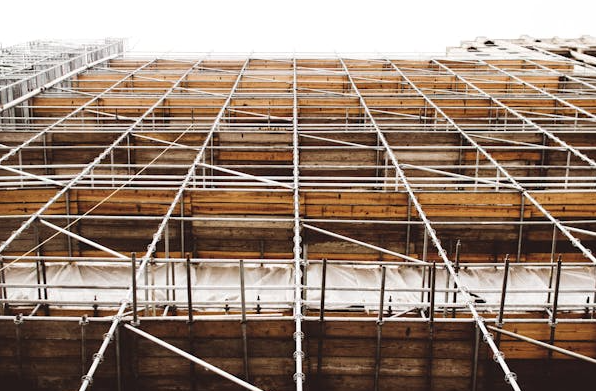
The skyline of any city is a testament to human ingenuity, ambition, and the relentless pursuit of progress. At the heart of this architectural evolution lies a seemingly mundane yet indispensable tool: scaffolding.
Far from just a temporary structure, modern scaffolding systems are pivotal in constructing the awe-inspiring buildings that define our urban landscapes.
We explore the transformative role of scaffolding in construction, shedding light on how these complex frameworks enable the creation of today’s architectural marvels.
The Unsung Hero of Construction
Scaffolding, often overlooked by the casual observer, is the skeleton upon which the modern construction industry relies. It provides the necessary support for workers and materials during the building process, delivering safety and efficiency. But beyond its practical functions, scaffolding is also a catalyst for architectural innovation, allowing builders to reach new heights—literally and figuratively.
A Brief History of Building Upwards
The history of scaffolding is as old as construction itself, evolving from simple wooden structures to the advanced, modular systems we see today. This evolution mirrors the advancements in building technologies and materials, enabling architects to push the boundaries of design and construction. With its versatility and strength, the modern scaffold model represents the culmination of centuries of innovation.
The Scaffold Model: A Foundation for the Future
The current-day scaffold design is more than just a set of metal pipes and platforms. It is a sophisticated, engineered system designed to accommodate the complex requirements of contemporary construction projects. These frameworks are characterised by their adaptability, durability, and ease of assembly, which make them indispensable in the efficient execution of construction tasks.
Safety and Efficiency in the Sky
One of the most critical aspects of modern scaffolding is its role in worker safety. With construction sites being inherently risky, the robust design and reliability of contemporary scaffolding systems are non-negotiable. They provide secure platforms and access points, significantly reducing the risk of accidents and enhancing overall site efficiency.
Challenges and Innovations
Despite the advancements in scaffolding technology, the industry faces ongoing challenges, such as adapting to complex architectural designs and navigating stringent safety regulations. However, these challenges drive innovation, leading to smarter, more flexible scaffolding solutions. That progress includes digital technologies, such as 3D modelling and automation, which promise to further revolutionise the field.
Environmental Considerations and Sustainability
As the world becomes increasingly conscious of environmental issues, the construction industry is no exception. Modern scaffolding systems are designed with sustainability in mind, using recyclable materials and reducing waste through reusable components. This eco-friendly approach minimises the environmental footprint of construction projects and aligns with global sustainability goals.
Company owners and contractors alike can assess ways of leveraging green construction materials. Thanks to these new developments and expansion of access, there is no excuse for brands not to complete their due diligence and maximise sustainable resources in the industry.
The Future of Construction
Looking ahead, the role of scaffolding in construction is set to become even more significant. The demand for advanced scaffolding systems will only grow as we strive to build taller, more complex, and environmentally sustainable structures. The future of construction lies in the balance between innovation and safety, with scaffolding remaining at the core of this dynamic equation.
Conclusion
The latest scaffolding designs are a cornerstone of contemporary construction, embodying the spirit of progress and innovation that drives the industry forward. As cities continue to reach for the skies, the evolution of scaffolding will undoubtedly play a critical role in shaping the future of our urban landscapes. Through its contribution to safety, efficiency, and sustainability, scaffolding proves that even the most utilitarian structures can have a profound impact on the world of architecture.



